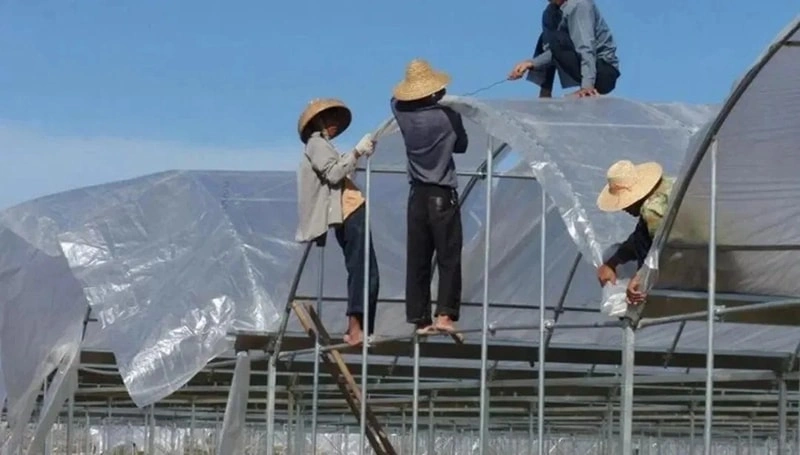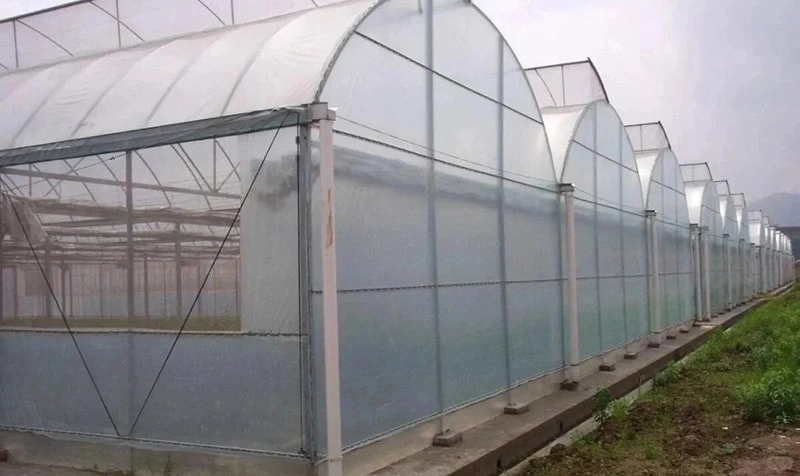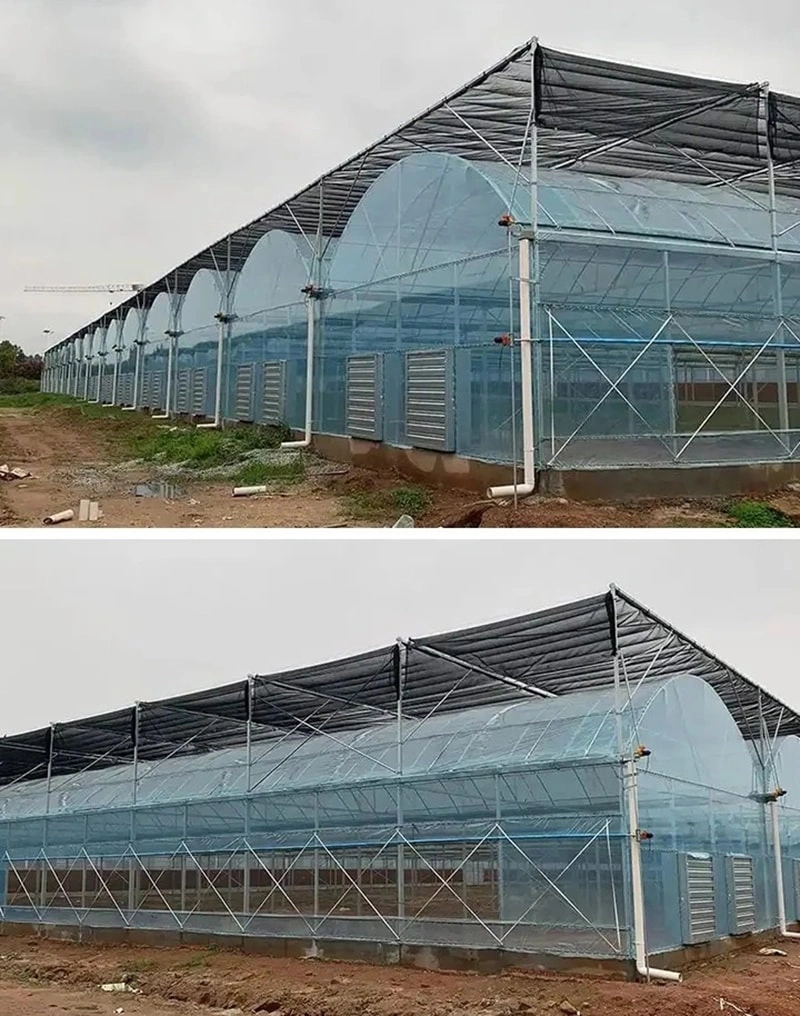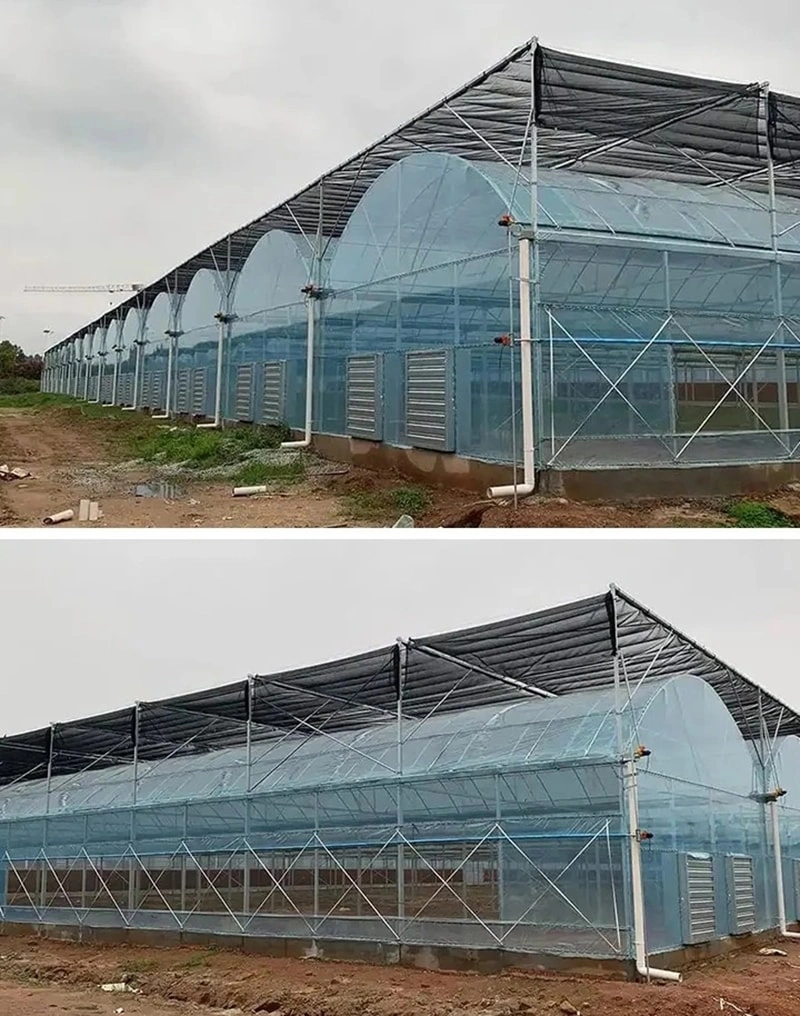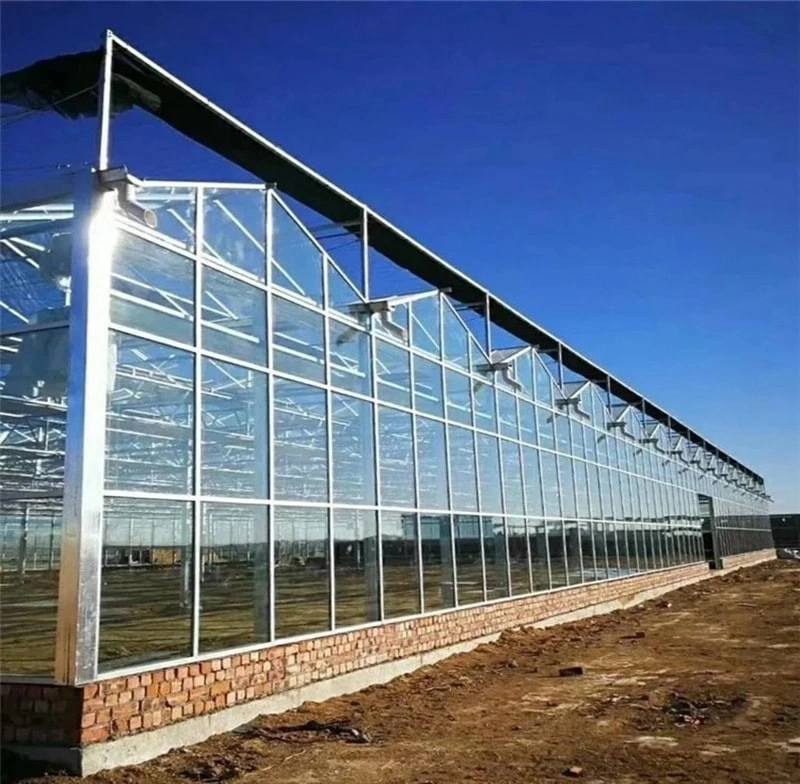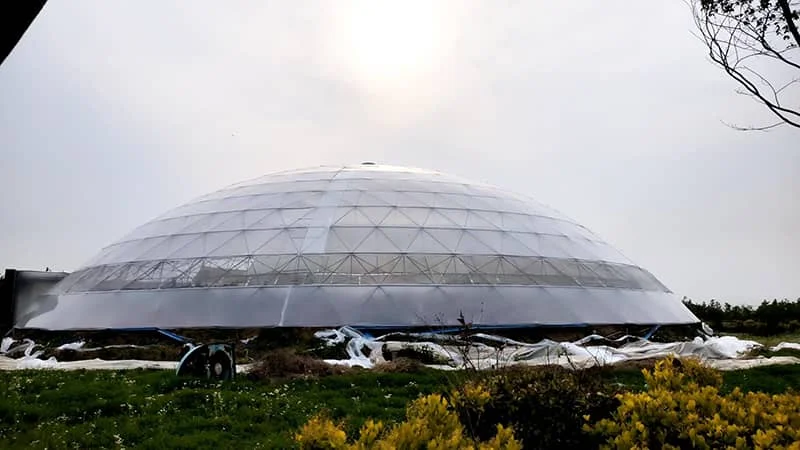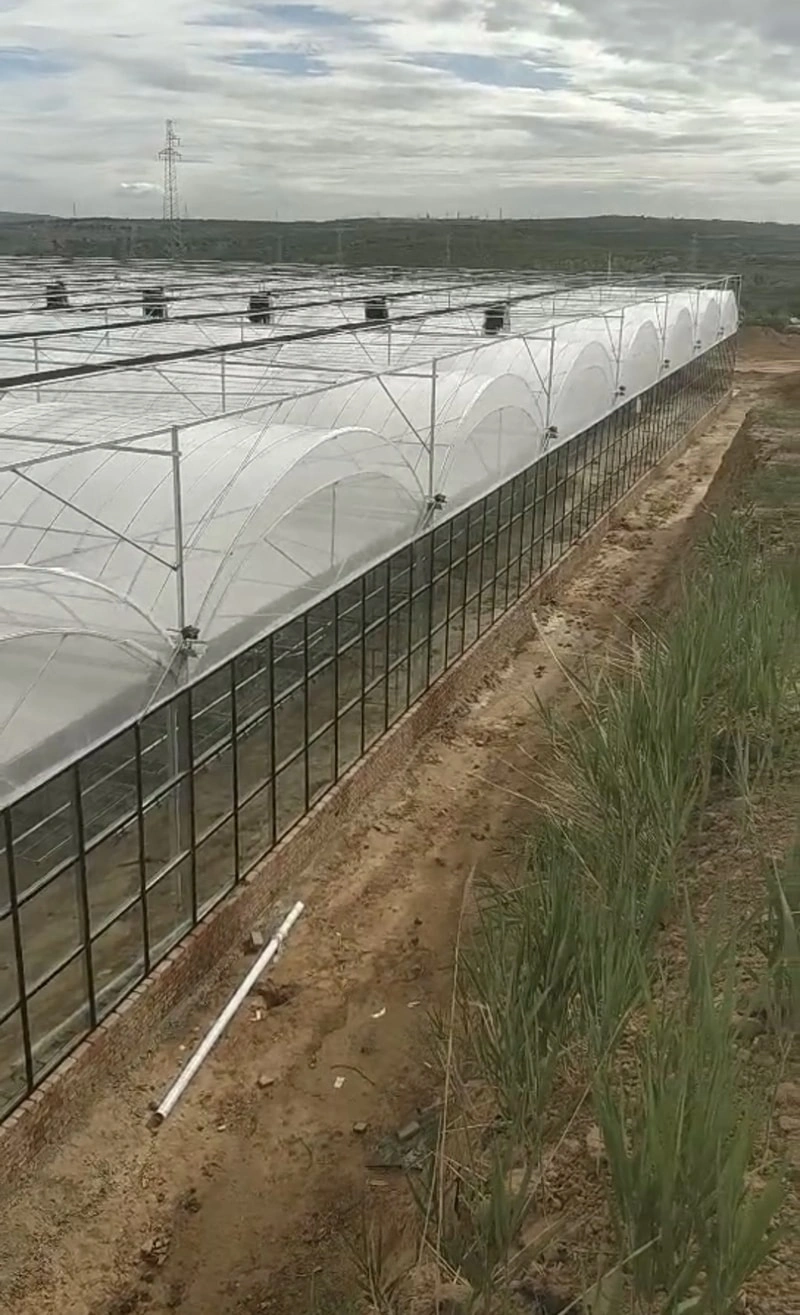Why plastic greenhouse tunnels are usually fitted with insect nets
1. Physical barrier to pests
- 20–30 mesh screens block >90 % of aphids, whiteflies, thrips, leaf-miners, etc. before they enter through vents or doors.
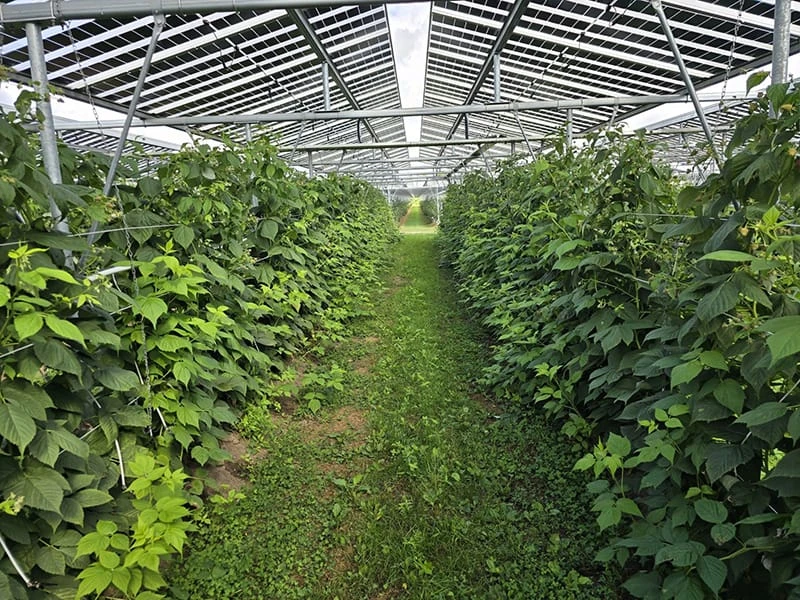
2. Virus suppression
- About 80 % of vegetable viruses are insect-vectored (aphids, whiteflies). Keeping the vectors out cuts virus incidence by 70–80 %, cheaper and more effective than repeated sprays.
3. Pesticide reduction
- Lower pest pressure means 30–50 % fewer spray applications, saving labour and chemicals and leaving lower residues – essential for green/organic programmes.
4. Micro-climate bonus
- White or grey nets diffuse strong light, reducing mid-summer leaf temperature by ~1 °C and preventing sun-scald.
- They also cut night heat loss in early spring (+0.5–1 °C soil temperature) and soften driving rain, lowering in-tunnel humidity and fungal disease risk.
5. Bird & large-animal protection
- The same mesh excludes sparrows, pigeons and bats that peck fruit or seedlings.
6. Low cost, long life
- Initial outlay ≈ USD 0.05–0.10 per square foot; nets last 4–6 years and can be removed, washed and re-installed without altering ventilation or curtain systems.
In short, an insect net is the cheapest, easiest multi-functional tool available: it keeps pests (and the diseases they carry) outside, reduces chemical use, moderates the greenhouse climate and improves crop quality and marketable yield.
Related News
A greenhouse, often referred to as a glasshouse or polyhouse, is a controlled environment structure designed to cultivate plants under optimal conditions, regardless of external weather. Modern greenhouse technology has evolved far beyond simple protective shelters, integrating advanced systems for efficient and sustainable agricultural production.
Modern greenhouse systems represent a sophisticated and versatile solution for contemporary agricultural and horticultural needs. These controlled-environment structures enable year-round cultivation, optimal resource management, and enhanced crop yields, regardless of external climatic conditions. Our company specializes in the design, fabrication, and installation of a comprehensive range of greenhouse types, each tailored to specific applications and client requirements.
Multi-span film greenhouses represent a significant advancement in protected agriculture, integrating intelligent environmental control and optimized spatial design to deliver multidimensional value in agricultural production. By leveraging smart technologies and flexible structural engineering, these greenhouses enhance crop productivity, resource efficiency, and adaptability across diverse climatic conditions.
Greenhouse films play a pivotal role in modern agriculture, serving as one of the most widely used covering materials for greenhouse structures. Compared to glass and polycarbonate sheets, plastic films hold a dominant market share due to their affordability, ease of installation, and adaptability to various climatic conditions. Among the available options, EV film, PE film, and PO anti-drip film are the most common types, each offering distinct characteristics suitable for different greenhouse applications and planting needs.
The scorching summer heat poses significant challenges for traditional tomato production. While conventional greenhouses often face crop termination during this period, smart glass greenhouses remain vibrant, maintaining excellent tomato growth and quality throughout the hottest months. What makes this remarkable resilience possible?
In the world of modern agriculture, multi-span greenhouses have become vital for year-round crop production and optimized growing conditions. Among the various types available, three stand out for their unique advantages: the multi-span arch greenhouse, the Venlo-type greenhouse, and the multi-span plastic film greenhouse. Understanding these structures can help farmers and agricultural businesses make informed decisions that enhance productivity and efficiency.
In the context of protected agriculture within greenhouses, the Deep Water Culture (DWC) system stands out as a highly efficient and popular method of hydroponic cultivation. Its application leverages the controlled environment of a greenhouse to create an ideal setting for rapid plant growth.
Of the many decisions facing the gardener or commercial grower, the choice of materials for a greenhouse frame and covering is perhaps the most fundamental. This selection directly influences the structure's longevity, internal climate, maintenance needs, and overall cost-effectiveness. A popular and highly practical combination, exemplified by models such as the Micro Greenhouse with a galvanized steel frame and polyethylene film covering, offers a compelling balance of durability, performance, and value.
Hungary is embracing the future of agriculture with the development of a state-of-the-art commercial greenhouse complex, designed to enhance productivity and sustainability. This ambitious project includes the construction of three new commercial greenhouses, covering a total area of 68,000 square meters. These structures will be equipped with advanced features such as double-layer screen installation, crop wires, and cultivation drainage gutters, ensuring optimal growing conditions and resource efficiency.
The evolution of agriculture has ushered in an era of precision and control, moving beyond traditional open-field farming to sophisticated protected cultivation methods such as greenhouse engineering and net-house engineering. At the heart of this transformation lies a critical technological advancement: the remote monitoring and control system for greenhouse equipment. This system is no longer a luxury but a fundamental component that defines the efficiency, productivity, and sustainability of modern controlled environment agriculture.








